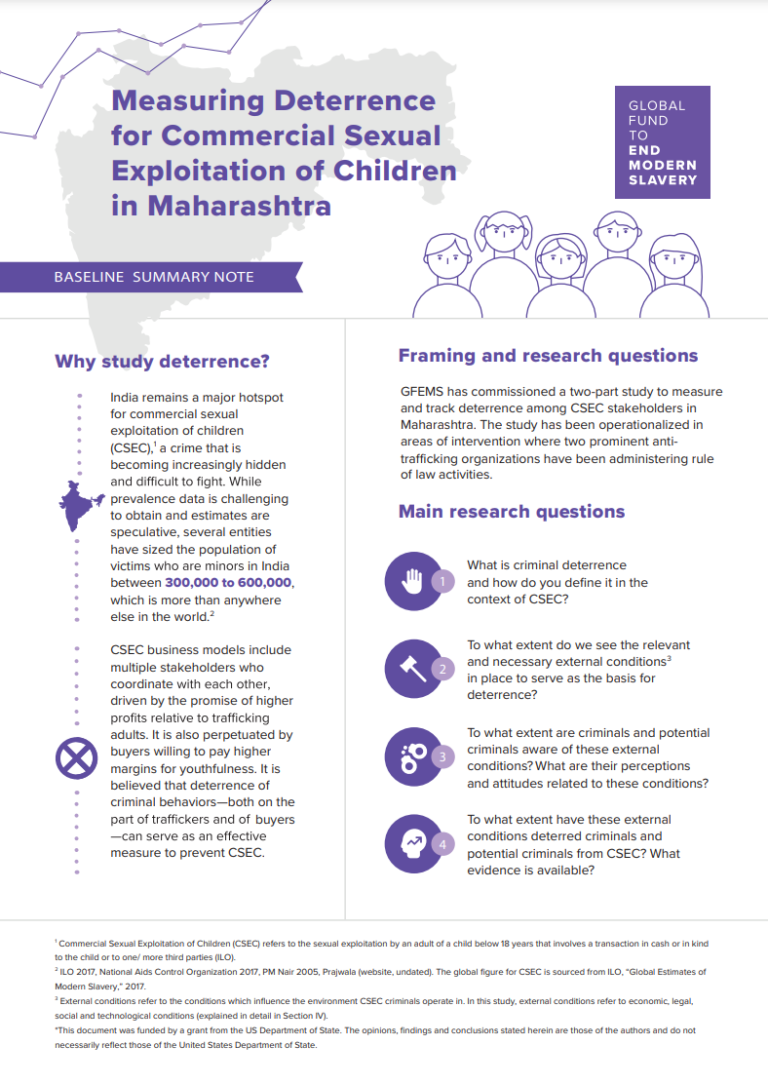India remains a major hotspot for commercial sexual exploitation of children (CSEC), a crime that is becoming increasingly hidden. Prevalence data is challenging to obtain and estimates are speculative; several entities have sized the population of victims in India between 300,000 to 600,000, which is more than anywhere else in the world.
GFEMS has commissioned a two-part study to measure and track deterrence among CSEC stakeholders in Maharashtra. The study has been operationalized in areas of intervention where two prominent antitrafficking organizations have been administering rule of law activities.

